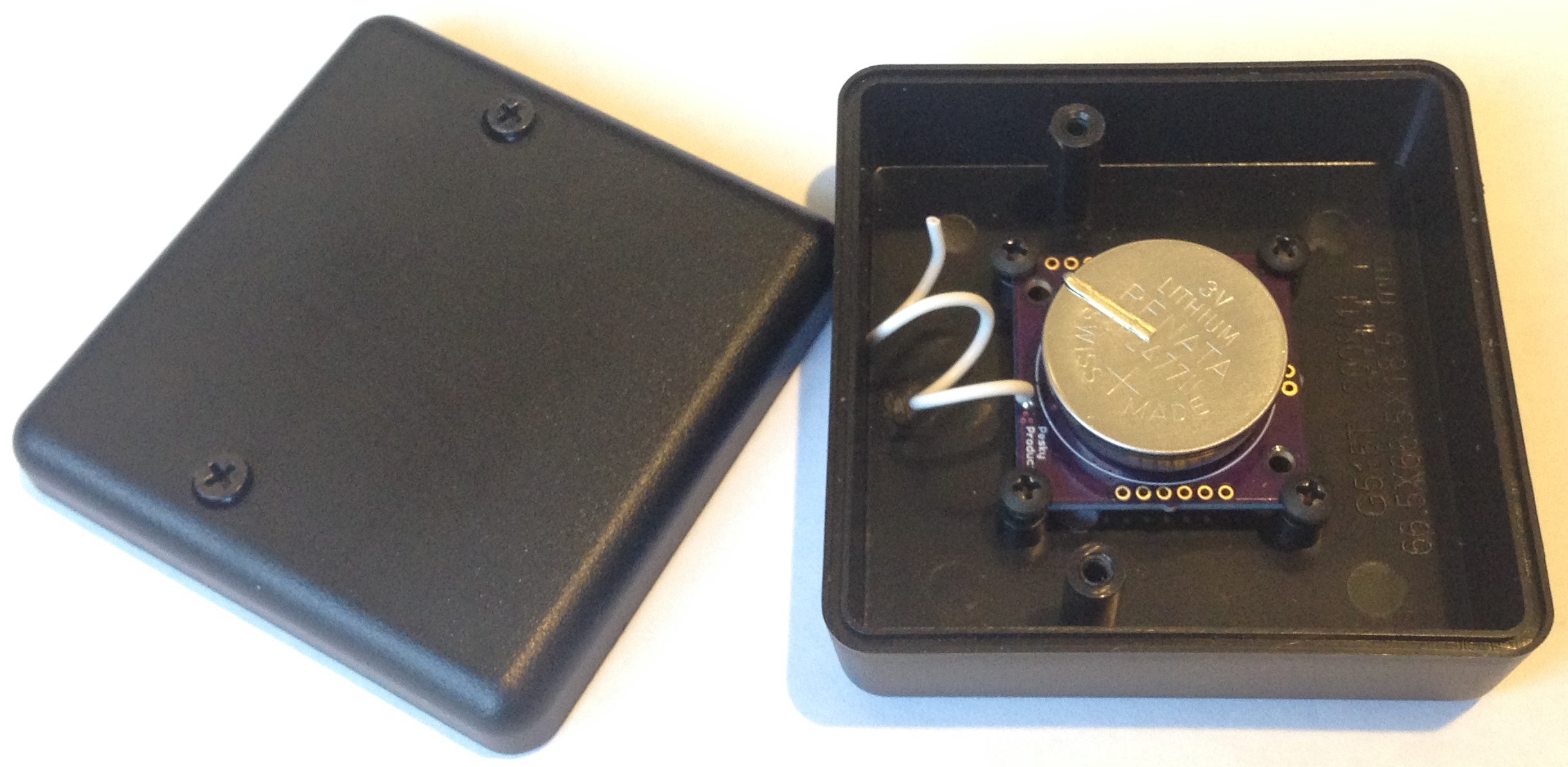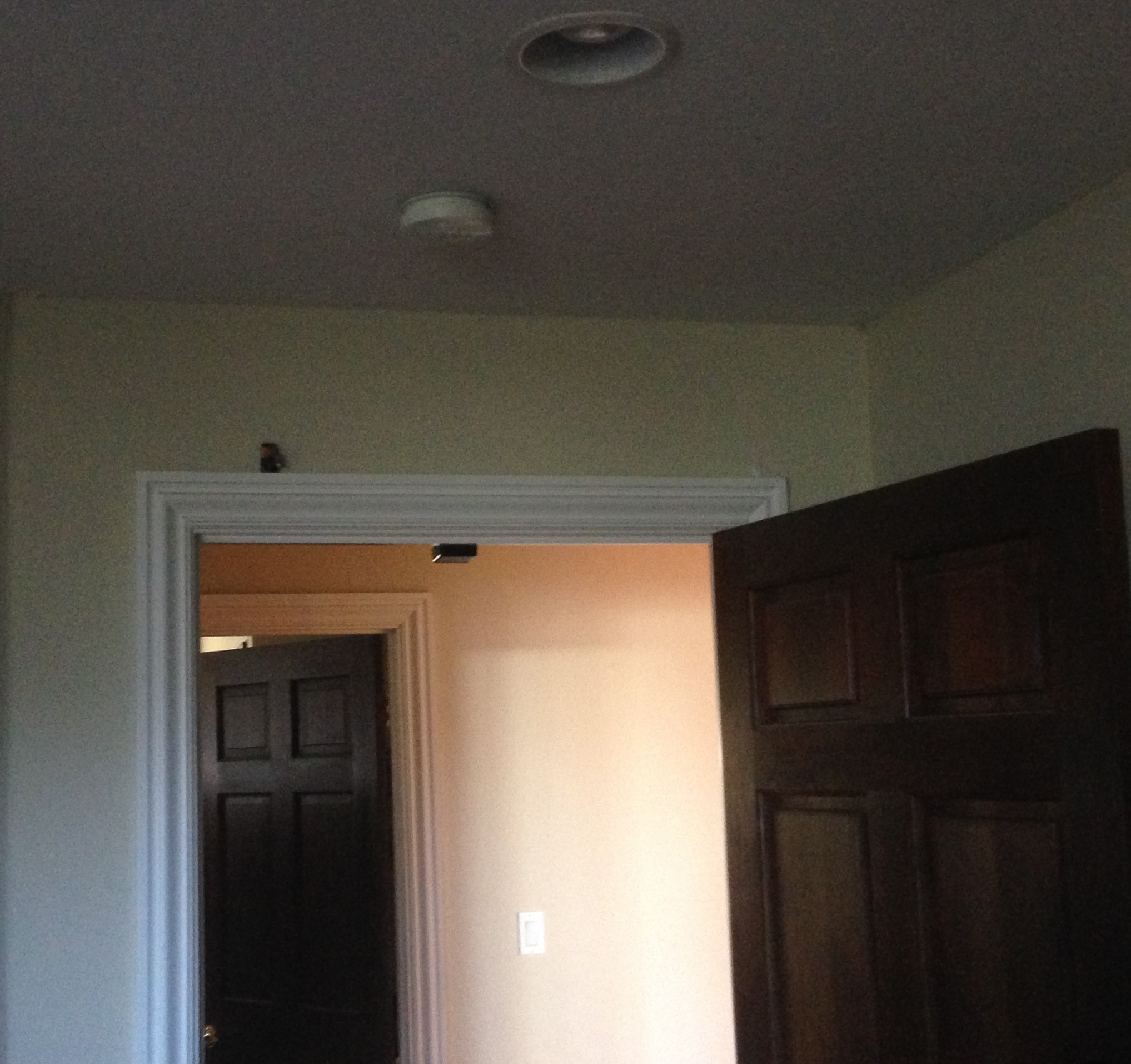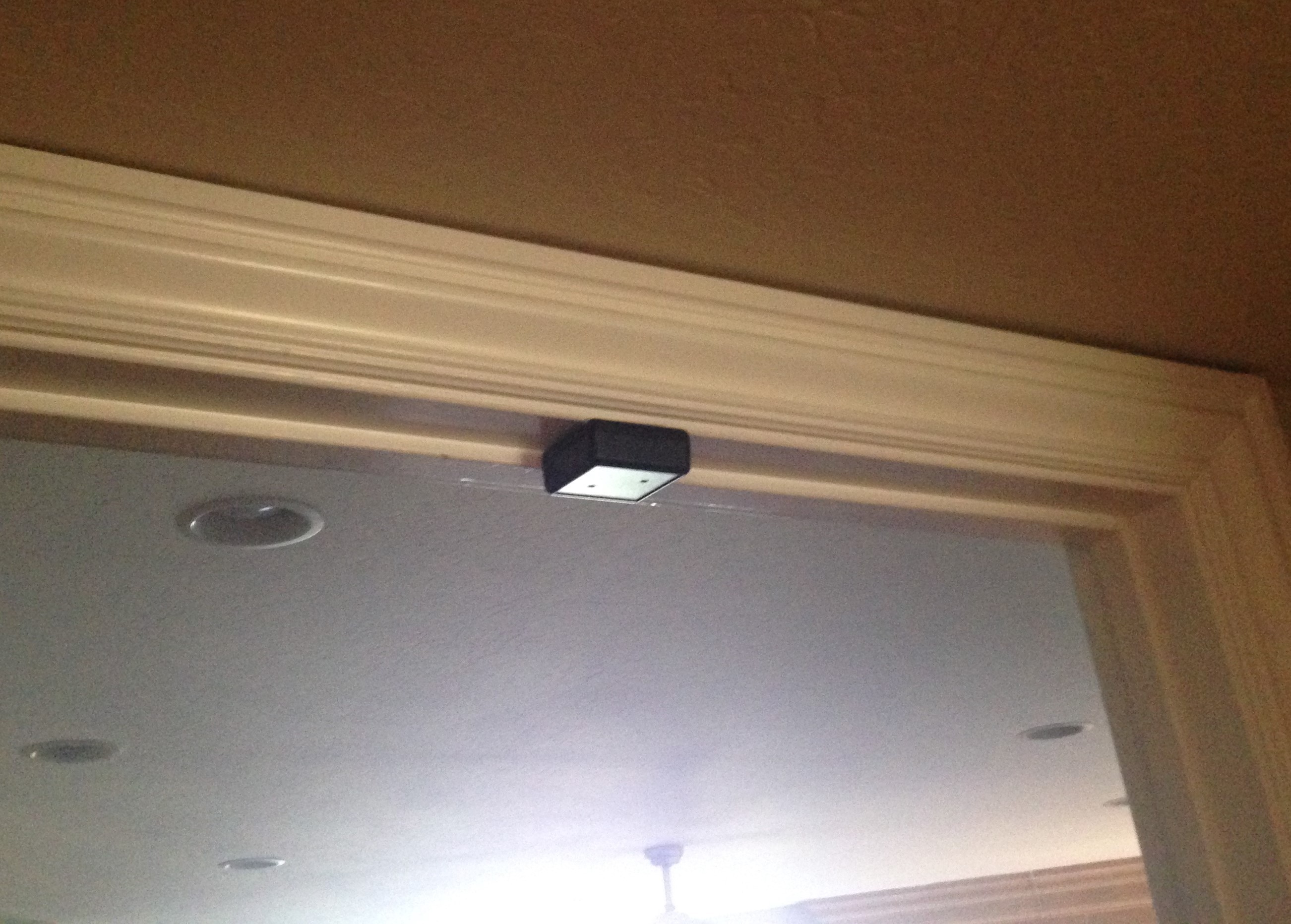March 13, 2019
I soldered on an 82-mm-long, insulated, 26-gauge copper wire as a simple monopole antenna, added LoRaWAN Tx at one-minute intervals to the People Counter sketch and plugged in the 3V, 950 mAH Renata battery.

I used Scotch tape to mount the People Counter on my bedroom door frame such that the door could close and not interfere with the container. This is how I would expect the People Counter to be mounted "in the field".


The door frame is at a standard 7-foot height, so when I walked through it the sensors would be about 30 cm from my head and 50 cm from my shoulders. I assume my head is what would trigger the ingress/egress detection.
After testing with a handwave on the workbench I installed the device on the doorway frame and proceeded to walk through the door, wait a minute or so, and then walk out the door and check the Cayenne dashboard to see if the latest trespass was captured by the People Counter. At one-minute Tx intervals, I usually saw the ingress on the dashboard when I returned to the workbench and could sit and wait until the egress showed up. Pretty exciting!
Somewhat to my surprise, each of five passes through the threshold and back again registered as it should and I had captured all five of each ingress and egress with 100% (OK, 10/10) accuracy.
Ingress:

Egress:

So I am pretty happy with this simple test of performance.
There is more extensive testing needed, of course. I suppose I could stand at a portal at a store somewhere with a counter and manually mark entrances and exits and then compare with, say, an hour's worth of data from the People Counter. After such testing, I am sure there would be some fine tuning needed. For example, the sensitivity of the threshold detection might need adjustment; the LoRaWAN Tx duty cycle needs to be selected for the particular use case.
At this point, I am interested in generating failures of the counter to work. The portal I selected for the first test is too narrow for more than one person to even try to pass at the same time, and this is where this kind of people counter is intended to be deployed. But what about performance when people of different sizes pass through, or people wearing hats, or who knows what. I need to generate a more realistic test to find out where this kind of device might fail and augment the sketch to deal with such situations properly. It is unlikely that in a real deployment the accuracy would remain at 100%.
But this is a good first start...
 Kris Winer
Kris Winer
Discussions
Become a Hackaday.io Member
Create an account to leave a comment. Already have an account? Log In.